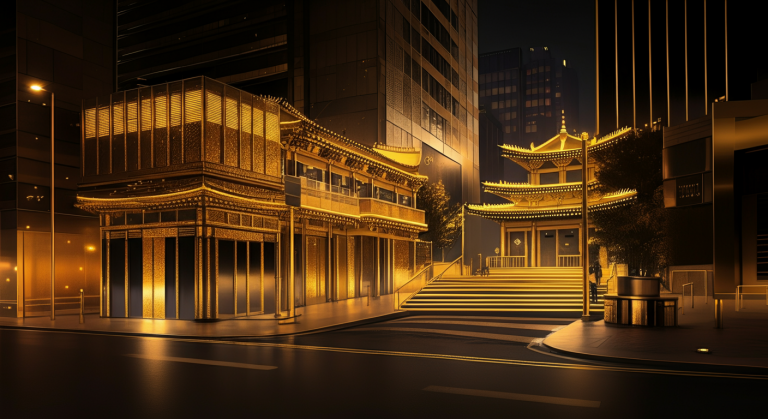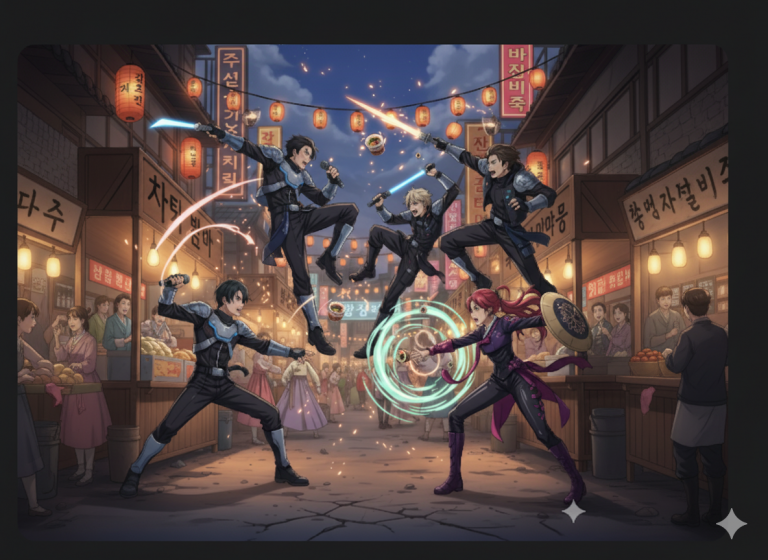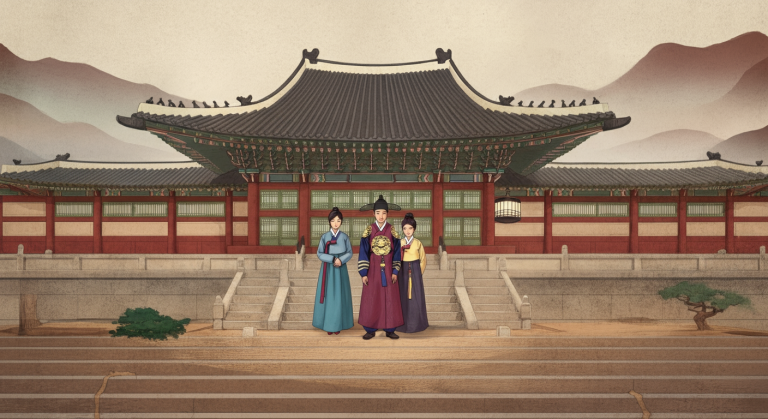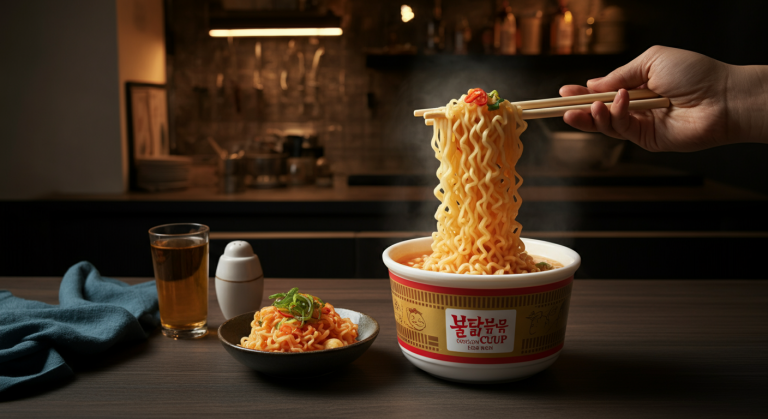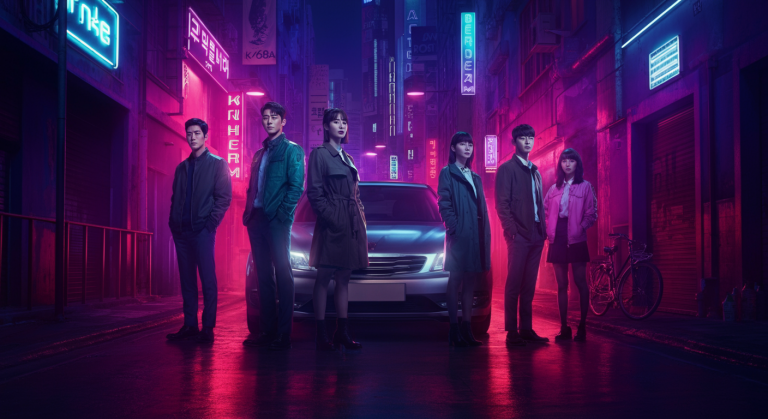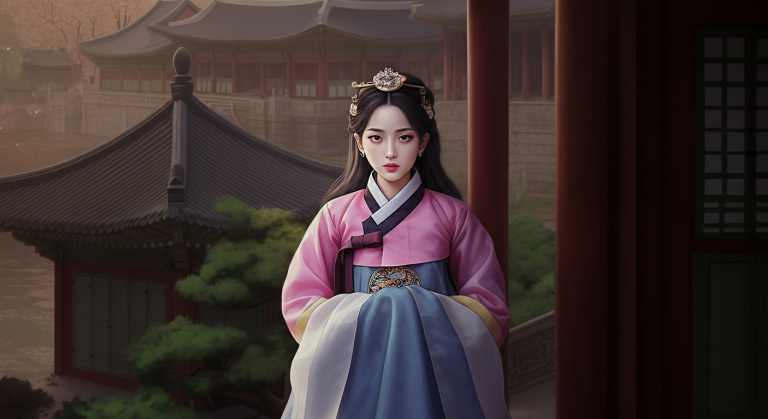K-pop Demon Hunters: K-Wave Hype?
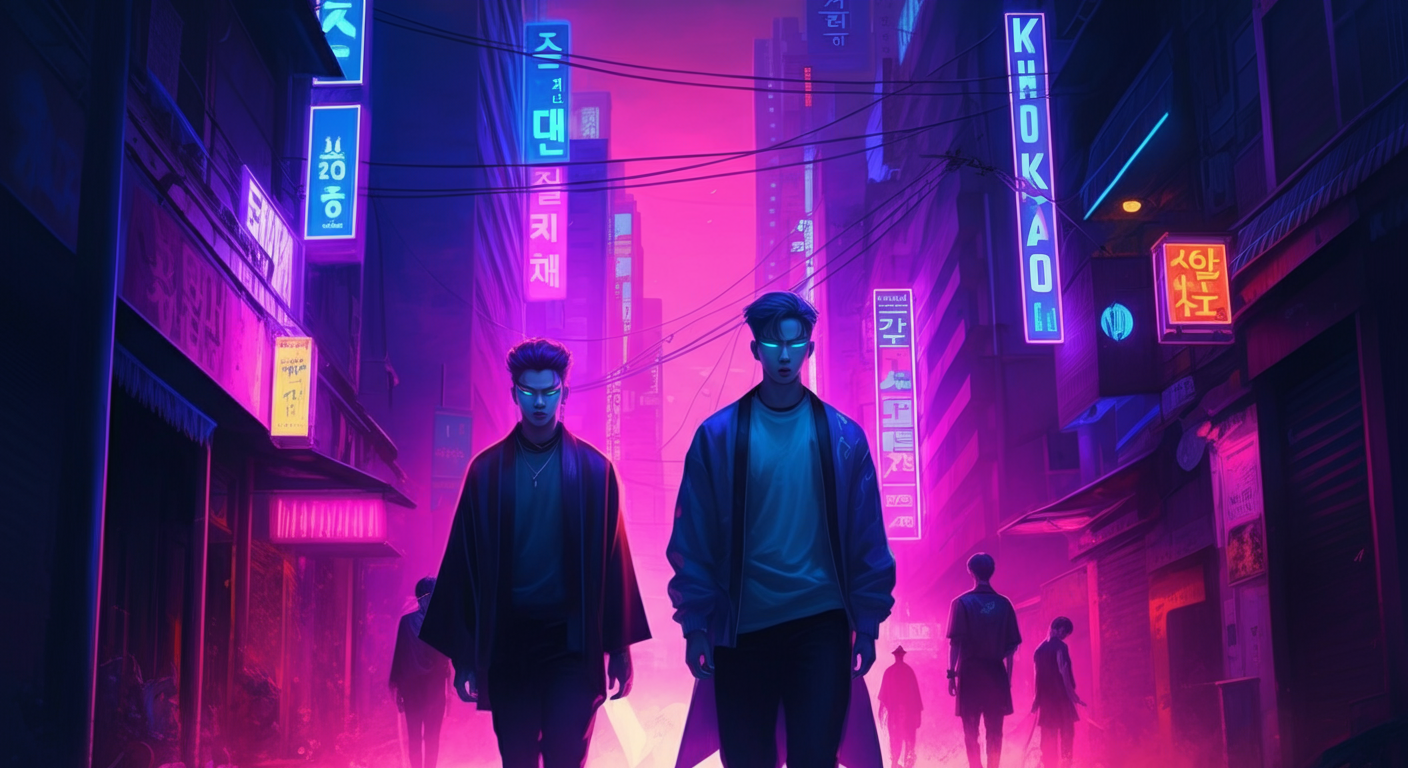
K-pop Demon Hunters (케이팝 데몬 헌터스): Where Idols Battle Evil and Culture Comes Alive
If you’ve ever dreamt of K-pop idols wielding ancient powers to fight supernatural forces, then Netflix’s latest animated sensation, K-pop Demon Hunters (케이팝 데몬 헌터스), is probably already on your radar. But beyond the thrilling action and catchy tunes, this show is a vibrant, fun-filled gateway into the heart of Korean culture, offering international audiences a delightful blend of the familiar and the uniquely Korean. Trust me on this: it’s more than just a cartoon; it’s a cultural love letter, wrapped in an idol fantasy.
Growing up in Korea, stories of spirits and mythical creatures (귀신과 도깨비) were as common as the latest pop songs on the radio. My grandmother would recount tales of mischievous goblins or wise mountain gods, and these narratives instilled in me a profound appreciation for our rich folklore. Fast forward to today, and seeing these ancient elements reimagined through the lens of modern K-pop in K-pop Demon Hunters brings such a joyful feeling. It’s a brilliant way to introduce our traditional myths to a global audience, especially those already captivated by the pulsating energy of K-pop and the emotional depth of K-dramas.
The global fascination with Korean culture, often dubbed the Hallyu (한류) or “Korean Wave,” has exploded in recent years, thanks largely to K-pop groups like BTS and Blackpink, and hit K-dramas such as ‘Squid Game’ and ‘Crash Landing on You.’ These cultural exports have paved the way for something like K-pop Demon Hunters to truly shine, weaving together various threads of Korean identity into an entertaining, accessible package. Viewers around the world aren’t just watching a show; they’re experiencing a cultural mosaic that blends contemporary cool with deeply rooted traditions.
Think about it: the meticulous training of K-pop idols, the mouth-watering appeal of Gimbap (김밥) and Ramyeon (라면), the fierce loyalty of fan culture (팬덤), and the enduring presence of folklore – all these elements, which resonate so strongly with Koreans, are now taking center stage in a global production. It’s a fantastic reflection of how Korean culture continually reinvents itself while holding onto its core identity. And for fans of K-pop and K-dramas, it’s like a scavenger hunt, spotting all the familiar cultural cues. You’ll find yourself nodding along, thinking, “Ah, I know that!” or “That reminds me of [insert favorite K-drama scene here]!” It’s this delightful interplay that makes K-pop Demon Hunters such an engaging and enriching watch for international audiences.
K-pop Demon Hunters: A Cultural Tapestry Woven with Modern Beats
The genius of K-pop Demon Hunters (케이팝 데몬 헌터스) lies in its seamless integration of wildly popular K-pop themes with the mystical world of Korean folklore. It’s not just a clever concept; it’s a testament to how adaptable and vibrant Korean culture truly is. This show effectively uses the global language of K-pop to introduce a deeper understanding of Korea’s spiritual and culinary traditions. It acts as a perfect bridge for anyone who has fallen in love with K-pop music or K-dramas and now wants to explore more of what makes Korea, well, Korea!
Imagine a world where your favorite K-pop idols, with their perfectly choreographed moves and dazzling stage presence, also have a secret life, protecting humanity from lurking evil spirits. This premise is incredibly appealing, especially to a generation that admires the dedication and talent of K-pop stars. The show’s narrative is built on a foundation that resonates deeply with both long-time K-culture enthusiasts and newcomers. It’s an action-packed fantasy that never loses sight of its cultural roots, creating a truly unique viewing experience. K-pop Demon Hunters doesn’t just entertain; it educates in the most delightful way.
Unpacking the Allure of K-pop Idols (아이돌) in K-pop Demon Hunters
The term ‘idol’ (아이돌) in K-pop carries a weight far beyond mere pop star. It embodies years of rigorous training, immense sacrifice, and an unwavering commitment to their craft. In K-pop Demon Hunters, the idols are portrayed with all these inherent qualities, amplified by their demon-hunting duties. They aren’t just singers and dancers; they are symbols of hard work and resilience. This representation speaks volumes about the actual K-pop industry, where trainees (연습생) often spend countless hours perfecting their skills, enduring incredibly tight schedules (빡빡한 스케줄), before they even debut.
This dedication, often unseen by the public, is a core part of the idol narrative, and K-pop Demon Hunters brilliantly showcases it. You see characters grappling with performance pressure while simultaneously battling supernatural threats. This duality mirrors the real-life demands on idols, who are expected to maintain a flawless image while navigating a high-pressure industry. The show uses this backdrop to highlight the very real passion and perseverance that define K-pop, making its characters relatable even as they perform incredible feats.
From Fan Culture (팬덤) to Folklore: The Rich Background of K-pop Demon Hunters
Another fascinating aspect of K-pop Demon Hunters is how it incorporates the vibrant K-pop fan culture (팬덤). K-pop fandoms are legendary for their loyalty, organization, and immense support for their idols. They are not just passive listeners but active participants, often influencing album sales, chart rankings, and even social causes. The show cleverly weaves in elements of this unwavering fan devotion, making it clear that the idols’ strength often comes from the love and belief of their fans. This connection between idols and their fans, often described as a unique kind of deep affection (정), is a powerful force in Korean society.
Beyond the modern, the show dives deep into Korea’s rich tapestry of folklore. Think about the enduring appeal of the *dokkaebi* (도깨비), a mythical goblin-like creature that gained massive global recognition through the hit K-drama ‘Goblin.’ K-pop Demon Hunters brings similar traditional spirits and demons to life, giving them a modern twist. These aren’t just random monsters; they often have roots in age-old Korean tales, each with its own backstory and cultural significance. For instance, the concept of a restless spirit (귀신) is deeply embedded in Korean spiritual beliefs, adding layers of authenticity to the fantastical battles waged by our idol heroes. This blend of ancient lore with contemporary pop culture is what makes K-pop Demon Hunters such a compelling watch. It’s a vivid demonstration of how traditions evolve and find new expression in modern narratives.
The Idol Phenomenon and Ancient Lore in K-pop Demon Hunters
The essence of K-pop Demon Hunters (케이팝 데몬 헌터스) truly shines in its portrayal of the K-pop idol as a modern-day hero, infused with the mystique of traditional Korean folklore. This unique combination offers audiences a captivating narrative that is both fresh and deeply rooted in Korean identity. The global appeal of K-pop has created a generation eager to understand the meticulous process and the cultural values that shape these stars. When you see an idol on screen, whether in a music video or a K-drama, there’s often an underlying story of relentless pursuit of excellence. And this anime brings that story right to the forefront.
For anyone who has watched a K-pop documentary or even seen a snippet of idol training, the dedication is palpable. K-pop Demon Hunters doesn’t shy away from depicting the intense commitment required, even for demon-hunting idols. It’s not just about fighting; it’s about balance, discipline, and performing under pressure – qualities that are essential in both the K-pop world and the supernatural battleground. This fusion creates a compelling character archetype that international viewers can admire and understand, linking the fantastical with the tangible realities of idol life.
The Journey to Stardom: Yeonseupsaeng (연습생) and Tight Schedules (빡빡한 스케줄)
Becoming a K-pop idol is no small feat. It’s a path paved with years as a trainee (연습생), a period marked by relentless practice and incredibly tight schedules (빡빡한 스케줄). Idols in K-pop Demon Hunters embody this same level of discipline. They don’t just wake up and fight demons; they train, rehearse, and perform, all while maintaining their secret identities. This dual life beautifully reflects the often-hidden struggles and immense pressure real-life idols face, constantly balancing their public image with their personal lives and demanding professional obligations.
This emphasis on hard work and perseverance is a deeply ingrained value in Korean culture. It’s the spirit of “do your best” (최선을 다하다) that drives many aspects of life, from education to career. Seeing the characters in K-pop Demon Hunters push their limits, both physically and mentally, resonates with this cultural ethos. It teaches international viewers that success in Korea often comes from unwavering dedication and an unyielding will to overcome challenges, a theme you’ll find mirrored in many popular K-dramas where protagonists achieve their dreams through sheer grit.
From Dokkaebi (도깨비) to Gwishin (귀신): Korea’s Mythological Lineup in K-pop Demon Hunters
Korean folklore is a treasure trove of fascinating beings, and K-pop Demon Hunters expertly brings some of them to the screen. While the show features its own unique demons, their essence is often inspired by traditional figures like the mischievous *dokkaebi* (도깨비), or the more eerie *gwishin* (귀신), which are ghosts or spirits. These creatures aren’t just monsters to be defeated; they often carry symbolic weight or moral lessons, much like the mythological beings in my childhood stories. The way the show integrates these elements showcases the richness of Korean imaginative narratives.
For instance, the *dokkaebi* (도깨비), made globally famous by the K-drama ‘Guardian: The Lonely and Great God’ (도깨비), often possess magical powers and can be benevolent or malevolent, depending on their interactions with humans. Similarly, *gwishin* (귀신) are typically spirits of the deceased who haven’t found peace, often due to injustice or unfulfilled desires. Understanding these nuances enriches the viewing experience of K-pop Demon Hunters. It’s like discovering the deeper layers of a story, realizing that what seems like pure fantasy has roots in centuries of shared cultural narratives. This connection to traditional beliefs makes the show more than just an action-packed cartoon; it’s a living archive of Korean mythology.
Beyond the Stage: Gimbap and Ramyeon as Cultural Stars in K-pop Demon Hunters
When we talk about K-culture, it’s impossible to ignore the incredible impact of Korean food. It’s not just sustenance; it’s an experience, a comfort, and a fundamental part of daily life. In K-pop Demon Hunters (케이팝 데몬 헌터스), this culinary connection is beautifully illustrated through two iconic dishes: Gimbap (김밥) and Ramyeon (라면). These aren’t just background props; they play a role in the characters’ lives, reflecting their fast-paced existence and the universal need for a satisfying meal. It’s a subtle but powerful way to ground the fantastical storyline in everyday Korean reality.
Think about how many K-dramas you’ve seen where characters bond over a shared meal of Ramyeon or pack Gimbap for a picnic. These moments aren’t accidental; they highlight the deep connection Koreans have with their food, often using it as a source of comfort, celebration, or even strategy. K-pop Demon Hunters leverages this familiarity, making these dishes not just food, but cultural touchstones that instantly resonate with anyone familiar with Korean media. It’s a testament to the show’s authentic portrayal of Korean life, even amidst demon-hunting adventures.
Gimbap (김밥): Korea’s Portable Power-Up in K-pop Demon Hunters
Gimbap (김밥), often described as Korea’s answer to the sushi roll, is far more than just rice and seaweed. It’s a versatile, nutritious, and incredibly portable meal that features prominently in K-pop Demon Hunters. For idols with demanding schedules, Gimbap is the perfect go-to. It can be eaten quickly between practice sessions, on the way to a performance, or even during a stakeout for demons! Growing up, my mother would often pack Gimbap for family outings or school picnics, and it always felt like a special treat, a symbol of care and thoughtfulness.
The beauty of Gimbap lies in its endless variations, allowing for different fillings from seasoned vegetables and egg to bulgogi and tuna. It’s truly a comfort food (소울 푸드) for many Koreans. In K-dramas, you often see characters sharing Gimbap, reinforcing bonds or making a quick meal. In the context of K-pop Demon Hunters, it becomes the ultimate fuel for our heroes. It’s easy to imagine our idol demon hunters grabbing a quick roll to recharge, reflecting the practical yet delicious nature of this beloved Korean staple. Learn more about Gimbap on Wikipedia.
Ramyeon (라면): The Ultimate Late-Night Craving (야식) for Demon Hunters
Ah, Ramyeon (라면). The undisputed king of late-night cravings (야식) and quick, satisfying meals. This instant noodle dish holds a special place in the hearts of Koreans and, increasingly, people worldwide. In K-pop Demon Hunters, imagine the exhausted idols after a grueling demon battle, finally unwinding with a steaming bowl of Ramyeon. It’s a scene you’ve probably witnessed countless times in K-dramas, where characters find solace and connection over this simple yet deeply satisfying meal.
Ramyeon is more than just noodles; it’s a ritual. Whether it’s adding an egg, some leftover kimchi, or a slice of cheese, everyone has their own “secret” recipe. It’s the ultimate pick-me-up, a dish that can be prepared in minutes but delivers immense comfort. This cultural significance makes its appearance in K-pop Demon Hunters particularly resonant. It reminds us that even heroes need a delicious, easy meal to recharge. It perfectly captures that “I’m so tired, but this is exactly what I need” feeling – a sentiment many K-pop idols likely share after a long day of practice and performances. It’s a wonderful example of how small culinary details can deeply enrich a story’s cultural authenticity.
K-pop Demon Hunters: Global Fanfare and the Ever-Expanding K-Culture Universe
The arrival of K-pop Demon Hunters (케이팝 데몬 헌터스) on Netflix is more than just another animated series; it’s a significant marker in the ongoing global expansion of Korean culture. Its blend of universally appealing action, fantasy, and the hugely popular K-pop aesthetic creates a unique synergy that resonates across diverse audiences worldwide. This show is a brilliant example of how K-culture continues to innovate, taking familiar elements and repackaging them in exciting, new formats for international consumption. It truly shows the power of the Hallyu (한류) wave, proving that Korean creativity knows no bounds.
From Asia to the Americas, and Europe to Africa, the reactions to K-pop Demon Hunters have been nothing short of enthusiastic. Viewers are not only entertained by the idol characters and their demon-fighting prowess but are also delighting in the subtle and overt cultural references. It’s a testament to how deeply K-pop and K-dramas have embedded themselves in the global consciousness, making once-unfamiliar concepts instantly recognizable and enjoyable. This broad appeal underscores how ready the world is for more diverse, culturally rich content like this.
Why K-pop Demon Hunters Resonates Worldwide: The Power of a Shared Experience
What makes K-pop Demon Hunters such a global hit? Part of its success lies in its ability to tap into the existing global K-pop fandom (팬덤). Fans who already adore their favorite idol groups are naturally drawn to a story that celebrates the energy and charisma of K-pop. But it’s also the universal themes – courage, friendship, identity, and battling inner and outer demons – that transcend cultural boundaries. The show beautifully combines these elements, offering an action-packed narrative that speaks to a wide audience. “Geureogeyo (그러게요)!” – you might say, “It just makes sense!”
Moreover, the animation style is sleek and appealing, making it accessible to viewers who might not typically watch anime or Korean-produced content. It bridges gaps, inviting new audiences to explore Korean storytelling. The portrayal of strong female leads, the emphasis on teamwork, and the vibrant visuals all contribute to its widespread appeal. K-pop Demon Hunters is proof that well-told stories, infused with authentic cultural flavor, can captivate hearts and minds across the globe. It’s a shared experience that unites fans through their love for a compelling narrative and vibrant characters. Explore more about Korean culture on Visit Korea.
A World United by K-Culture: Humorous Global Reactions to K-pop Demon Hunters
Observing global reactions to K-pop Demon Hunters has been a delight. In Southeast Asia, fans often rave about the fashion and styling of the idols, drawing parallels to their favorite real-life groups. In Latin America, the fast-paced action and the strong bonds between the characters are frequently highlighted, reminiscent of popular telenovela themes, but with a supernatural twist. Over in Europe, viewers often express fascination with the blend of traditional Korean mythology and modern pop culture, marveling at the creative storytelling. And in North America, the humor and unique premise often garner praise, with many appreciating the fresh take on the demon-hunting genre. It’s fascinating how different regions find different aspects to connect with!
This diverse engagement is a clear indicator of the robust and ever-expanding Hallyu (한류). What started as a niche interest has blossomed into a global cultural phenomenon, with content like K-pop Demon Hunters acting as both an entry point and a satisfying deep dive for millions. The show doesn’t just entertain; it sparks curiosity, encouraging viewers to explore more about Korea’s rich history, delicious food, and dynamic entertainment industry. It’s truly “Daebak (대박)!” – a phenomenal success that shows no signs of slowing down. This global embrace is a testament to the universal language of good storytelling and the infectious charm of Korean culture.
The Enduring Magic of K-pop Demon Hunters: A Conclusion
As we wrap up our deep dive into **K-pop Demon Hunters (케이팝 데몬 헌터스)**, it’s clear that this animated series is far more than just a captivating watch. It’s a vibrant cultural ambassador, skillfully blending the dynamic energy of K-pop, the rich tapestry of Korean folklore, and the undeniable appeal of Korean cuisine. The show serves as an excellent entry point for international audiences curious about Korean culture, making complex concepts accessible and exciting. It truly encapsulates the spirit of the Hallyu (한류) and its global reach.
From the intense dedication of our idol demon hunters, reflecting the real-life journey of a trainee (연습생), to the comforting presence of Gimbap (김밥) and Ramyeon (라면) as they fuel their adventures, every element of K-pop Demon Hunters is steeped in authentic Korean charm. It’s a narrative that honors tradition while embracing modernity, proving that ancient stories can find new life in contemporary settings. The enthusiastic global reactions further cement its status as a significant piece of K-culture content, sparking conversations and fostering a deeper appreciation for Korea worldwide.
So, whether you’re a die-hard K-pop fan, a K-drama enthusiast, or simply someone looking for a fun and culturally rich animated adventure, K-pop Demon Hunters is absolutely worth adding to your watch list. It’s a celebration of Korean identity, creativity, and the power of storytelling to connect us all. It reminds us that culture is alive, evolving, and incredibly engaging. “It’s love (사랑이야)!” as we say in Korea, for content that truly bridges worlds and brings people together. Dive in, and let these K-pop heroes show you a whole new side of Korea!
